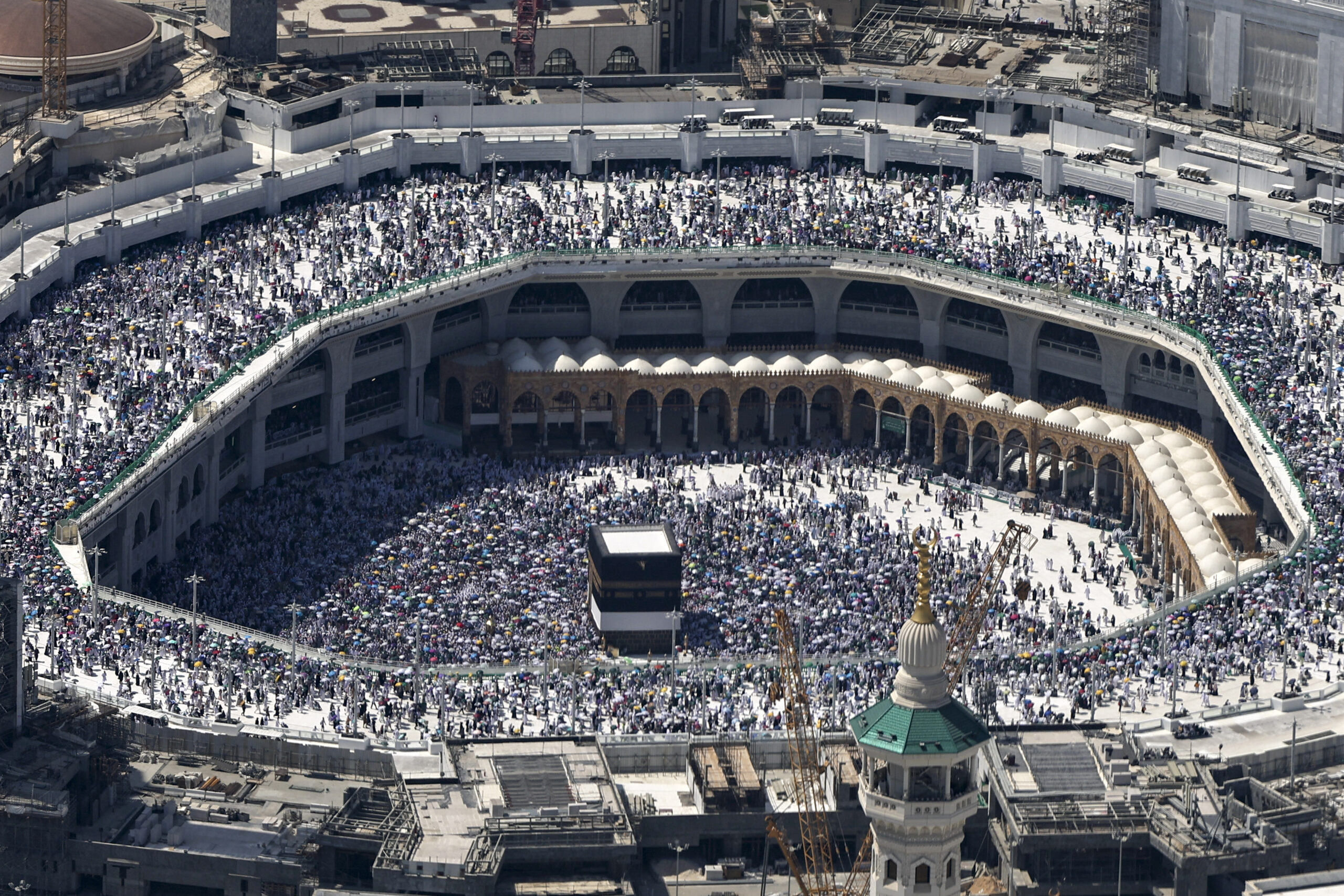Filipino among 1,000 dead in Hajj pilgrimage

An aerial view shows Mecca’s Grand Mosque with the Kaaba, Islam’s holiest site in the centre on June 17, 2024, during the annual hajj pilgrimage. Saudi Arabia on June 17 warned of a temperature spike in Mecca as Muslim pilgrims wrapped up the hajj in searing conditions, with more than a dozen heat-related deaths confirmed. (Photo by FADEL SENNA / AFP)
A Filipino based in Riyadh, Saudi Arabia, was among the estimated 1,000 people who died due to extreme heat during the Hajj pilgrimage, the Department of Foreign Affairs (DFA) said on Friday.
“So far, one female Riyadh-based Filipino pilgrim died of natural causes (heatstroke) in Makkah,” said Foreign Undersecretary Eduardo de Vega.
The 37-year-old overseas Filipino worker died on June 16 and was buried on June 19, in accordance with Muslim customs on immediate burial of the dead.
De Vega said the DFA sent a team to Saudi Arabia to help the Philippine Embassy in Riyadh in assisting an estimated 5,100 Filipino Muslims who made the pilgrimage this year.
At a news briefing last week, the National Commission on Muslim Filipinos reported that a total of 5,060 Filipino pilgrims were issued visas to attend the religious gathering from June 14 to June 19.
The annual Hajj pilgrimage to Mecca, Saudi Arabia, is one of the five pillars or “practices” of Islam. Muslims are required to take part in this ceremony at least once in their lifetimes if they are physically and financially capable of this duty.
READ: Loved ones search for missing as hajj death toll passes 900
The pilgrimage involved hours of walking and praying in a country where temperatures reached 51.8 degrees Celsius (125 degrees Fahrenheit) this week.
READ: Hajj pilgrims ‘stone the devil’ as Muslims mark Eid al-Adha
How the body cools itself
The World Health Organization (WHO) has calculated that heat kills at least half a million every year and warns that the real figure could be up to 30 times higher.
Pieter Vancamp, a neurobiologist at French research institute INRAE, explains how extreme heat damages the body and how physical activity outdoors raises the risk.
In normal conditions, the body regulates its own temperature like a thermostat, holding it steady at about 36.8 C (98.2 F).
When outside heat rises, the body cools itself by raising blood flow to vessels near the skin. This emits heat at the surface, while perspiration also cools the outside of the body.
“To ensure the correct functioning of the cells, enzymes, and vital organs, the body’s temperature must stay constant, whatever the external conditions,” Vancamp said.
During an activity, such as the Hajj, where pilgrims spend hours outdoors in the sun, “the body can quickly become exhausted and can no longer find the reserves of water needed to perspire,” he said.
Then the kidneys, heart, and brain risk overheating and “stop working,” Vancamp added.
When the body’s natural thermostat is overwhelmed in this way, symptoms strike—fatigue, headaches, fever, and broken sleep.
These can herald more serious effects, such as dehydration, which chokes off water to the vital organs.
The biggest risk is heatstroke when the body’s temperature exceeds 40 C (104 F).
“The body has its limits,” said Vancamp. “When the weather is too hot or when extreme heat is combined with physical activity, for example, the body can find itself unable to self-regulate.”
Babies, the elderly, people with health problems, and outdoor workers are most at risk.
The number of sweat glands in the body decreases with age, leaving the body less able to cool itself. “Several factors determine our reaction to heat: age, body mass, physical activity, genes,” Vancamp said.
“But when the heat is too strong, even young, healthy bodies can lack the energy to keep the temperature close to 37 C.”
The WHO warns that hot nights pose a particular health risk. Nighttime heat gives the body no chance to cool down, leading to a rise in heart attacks. —WITH A REPORT FROM AFP
